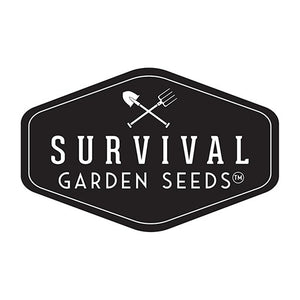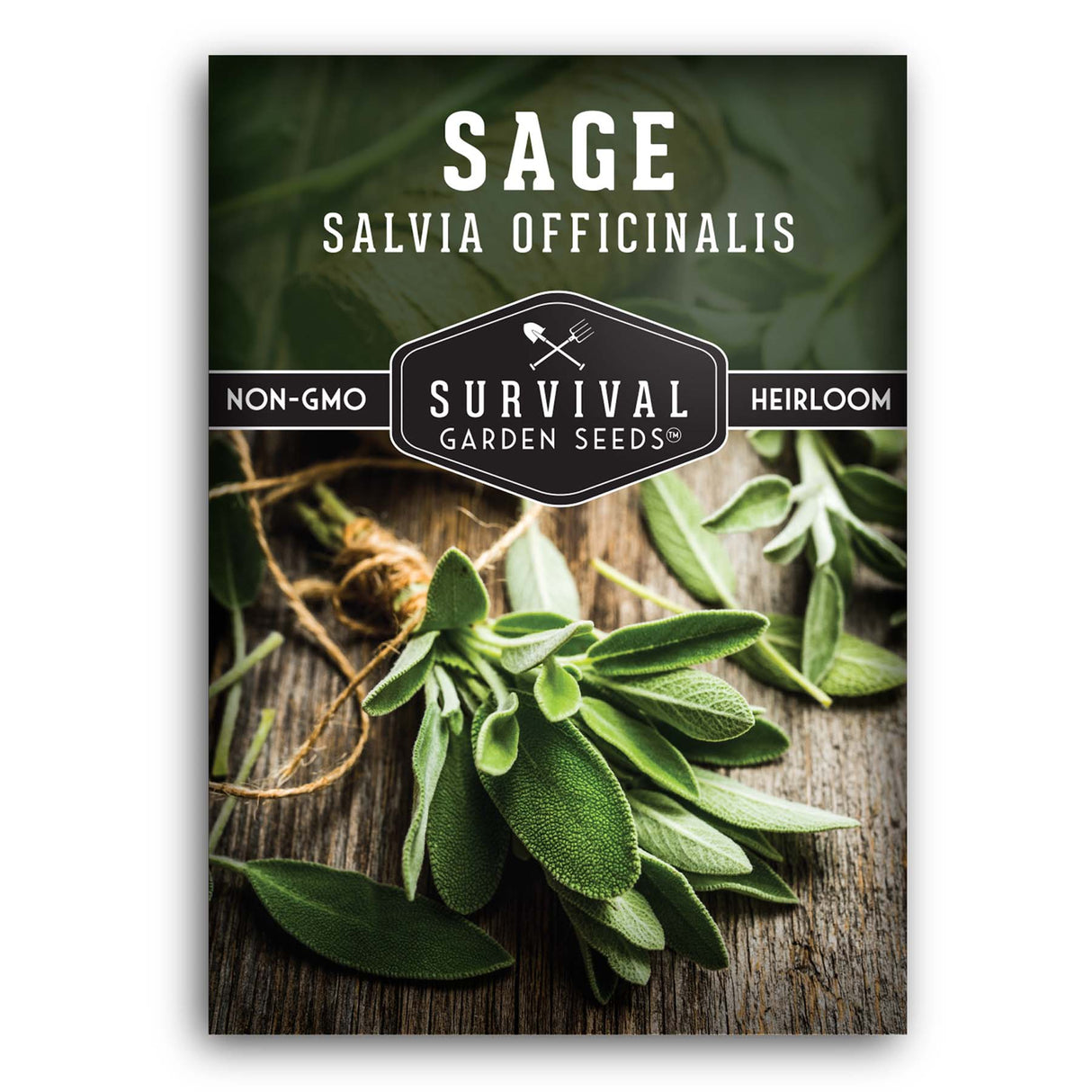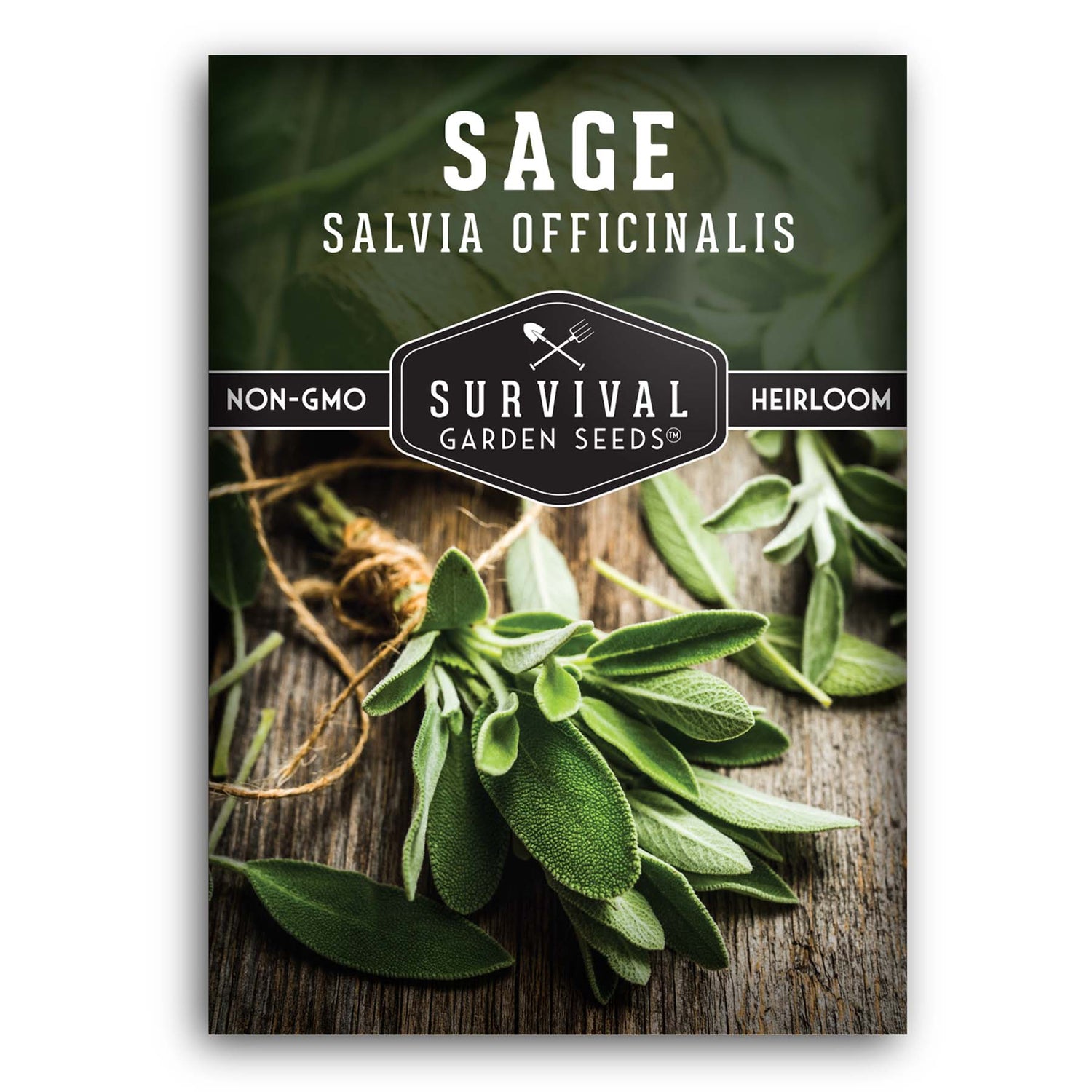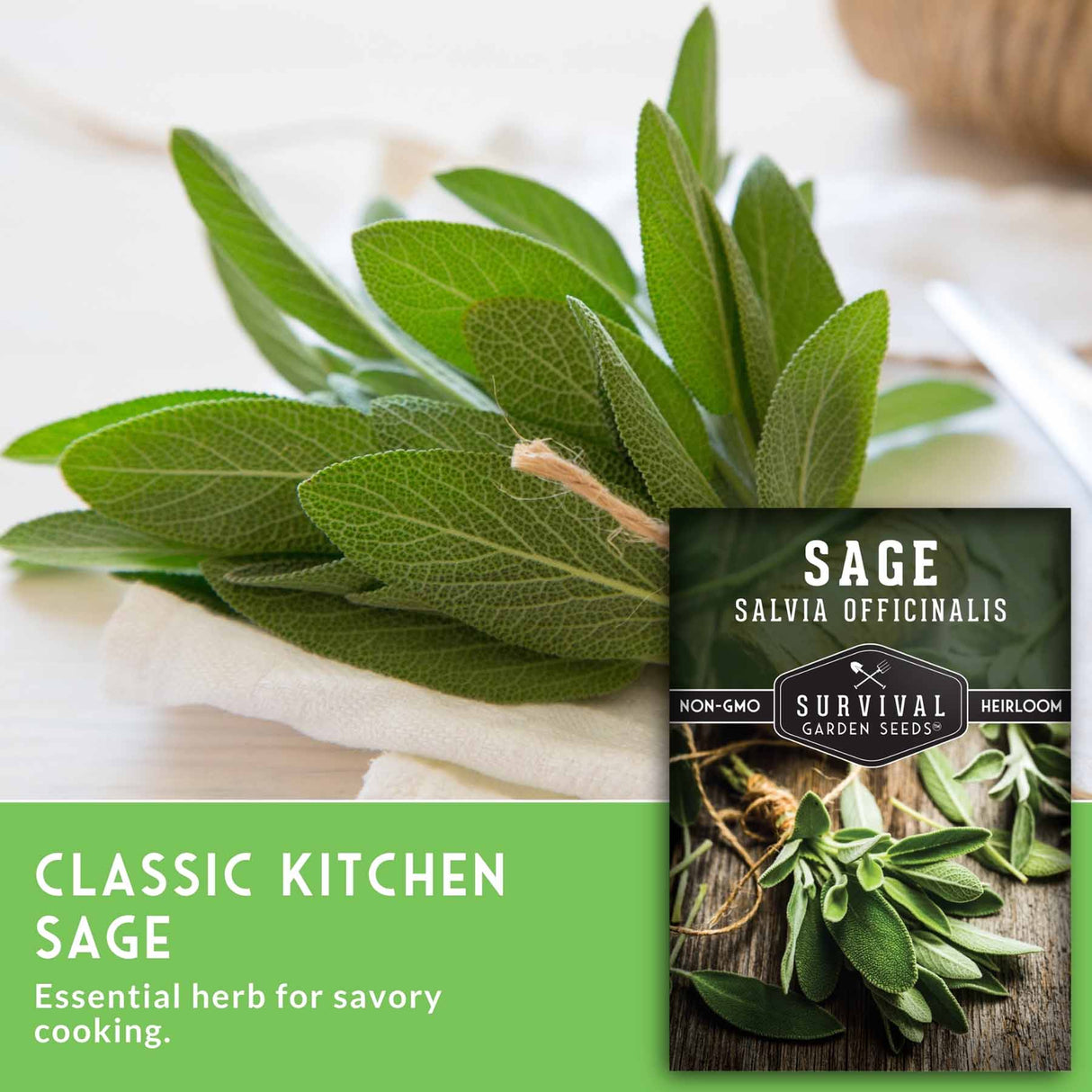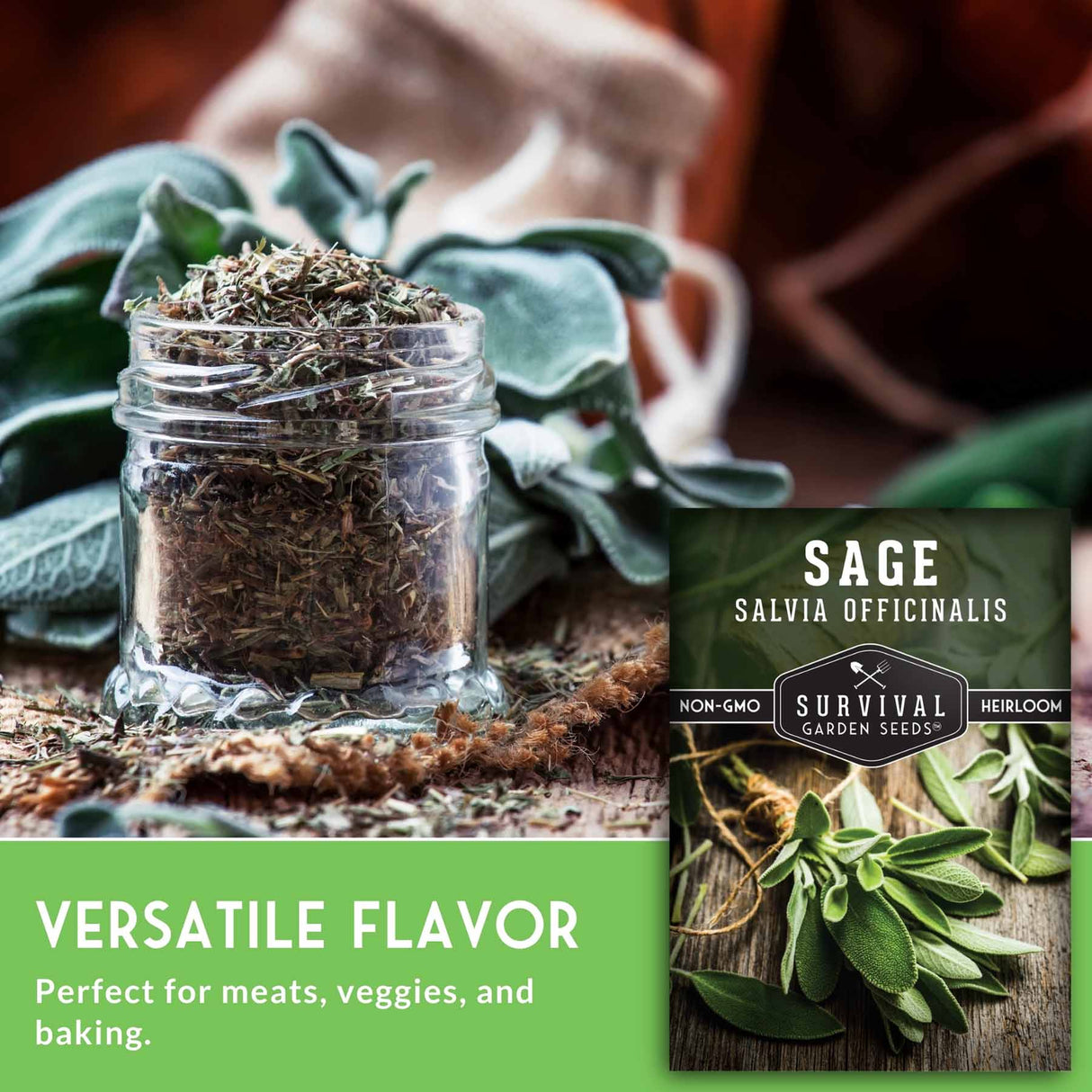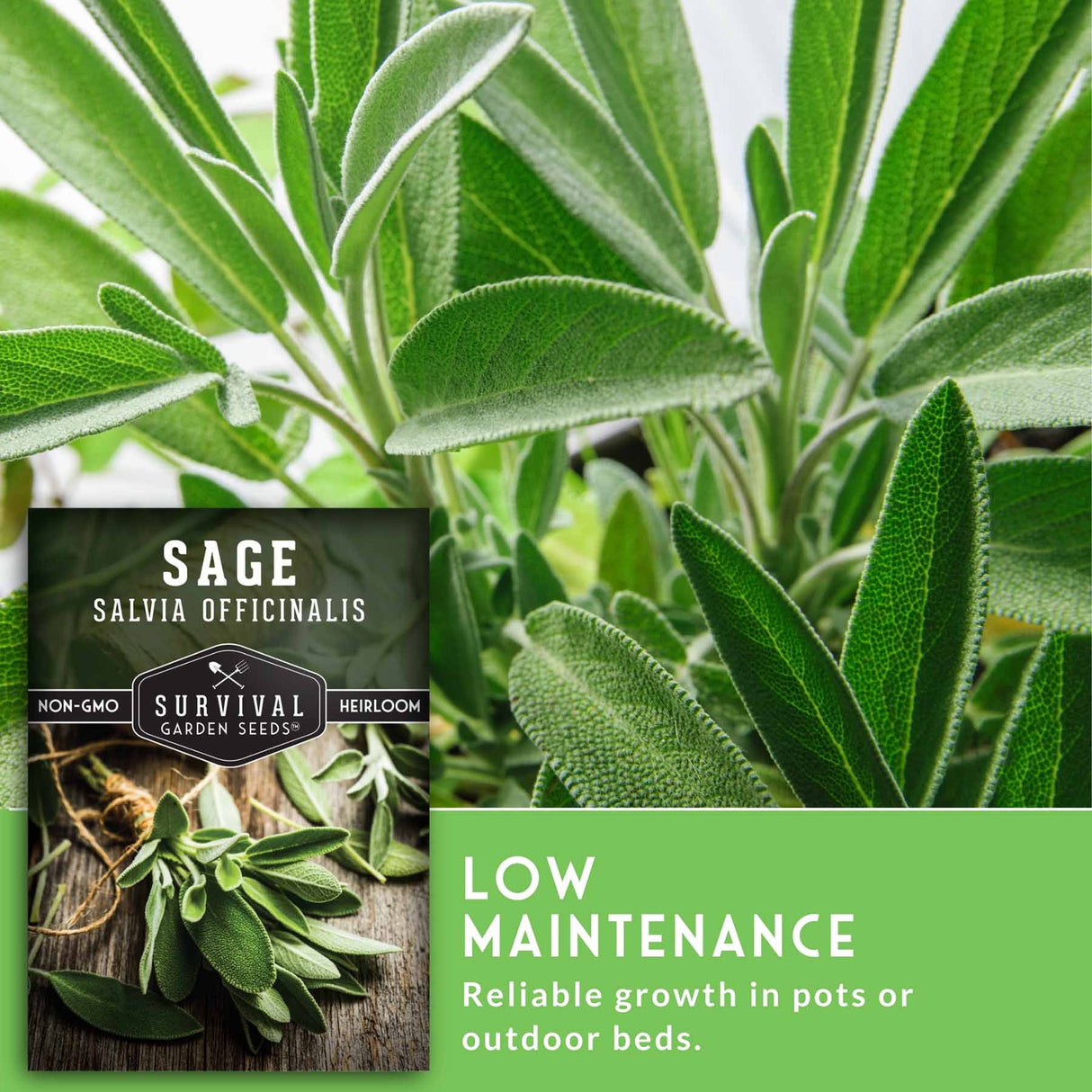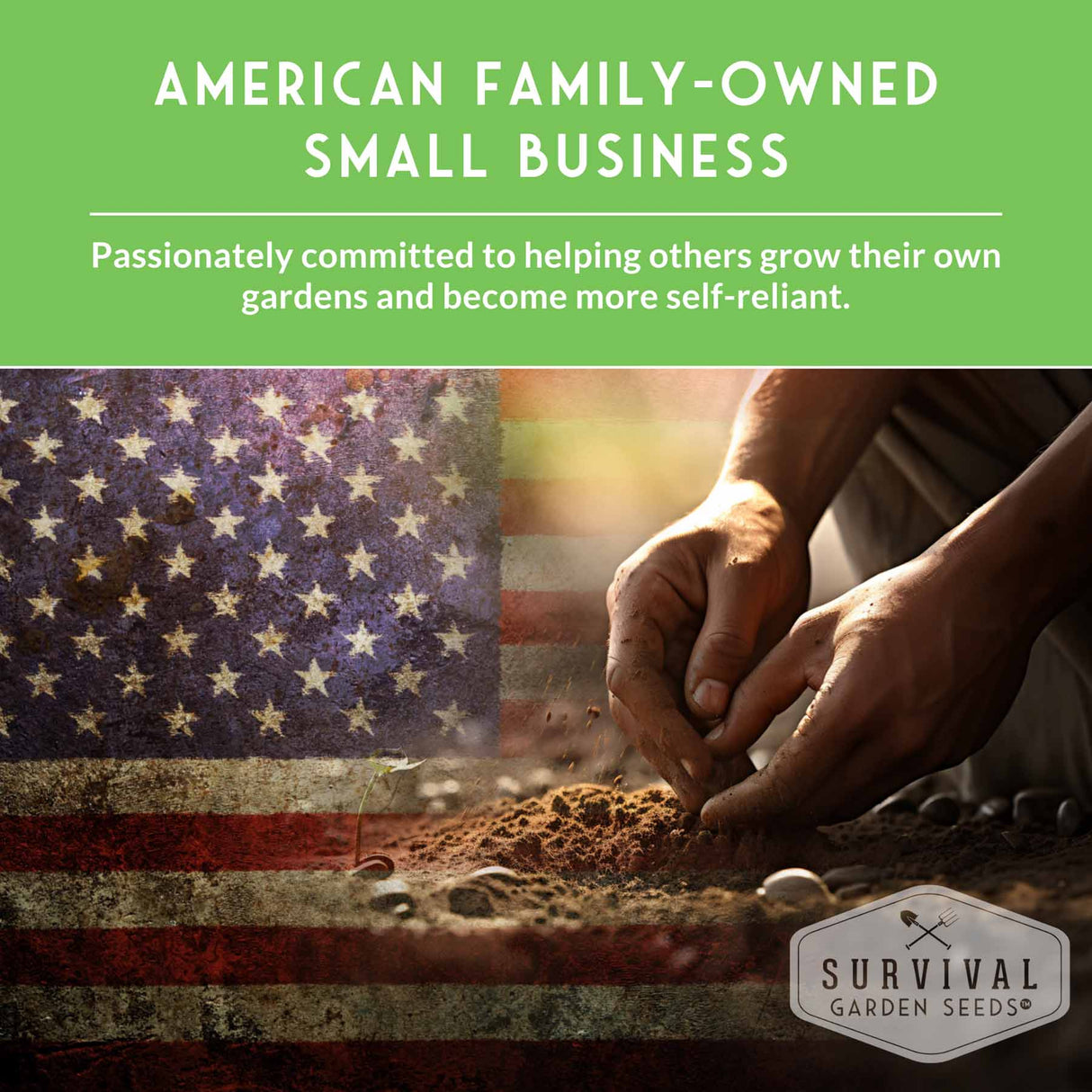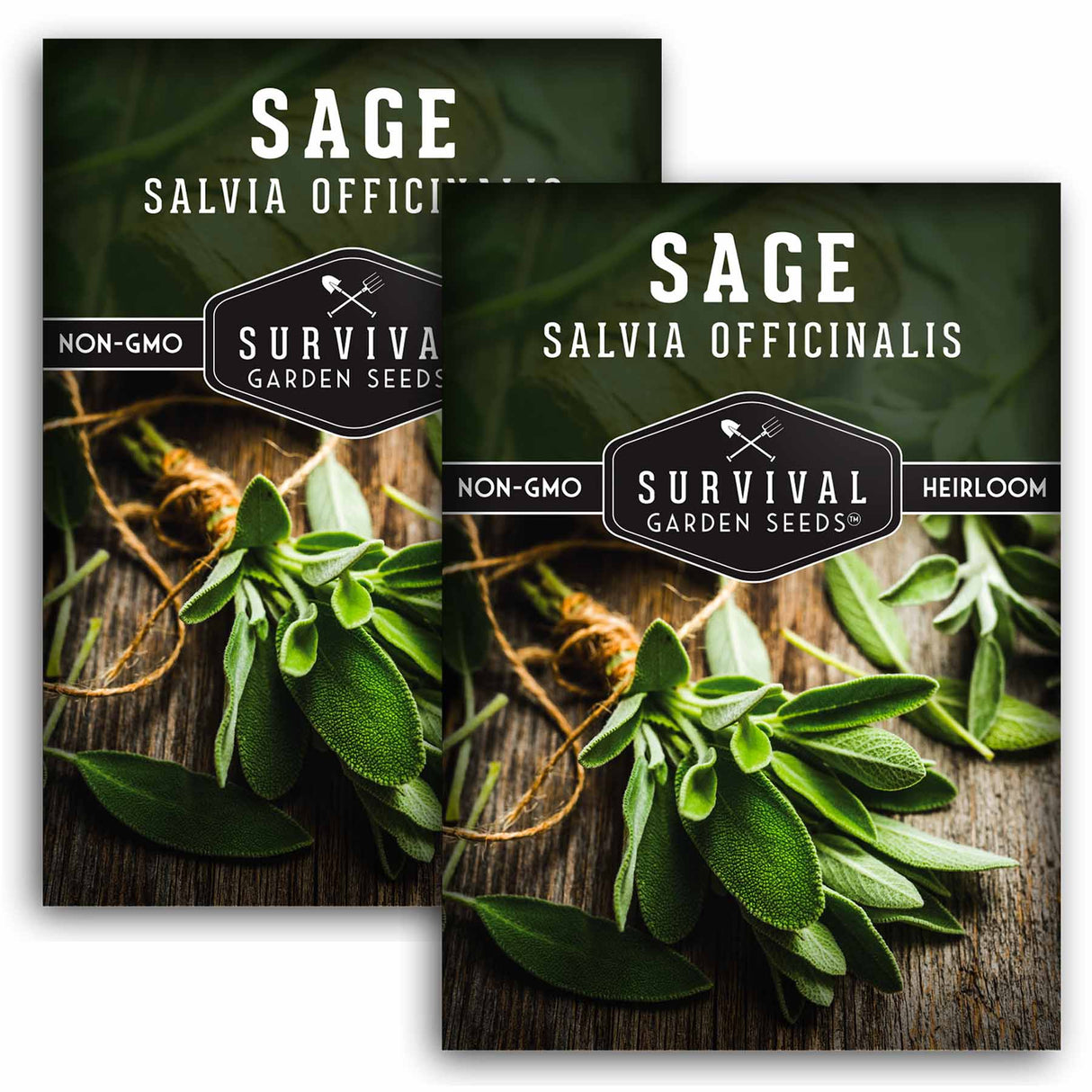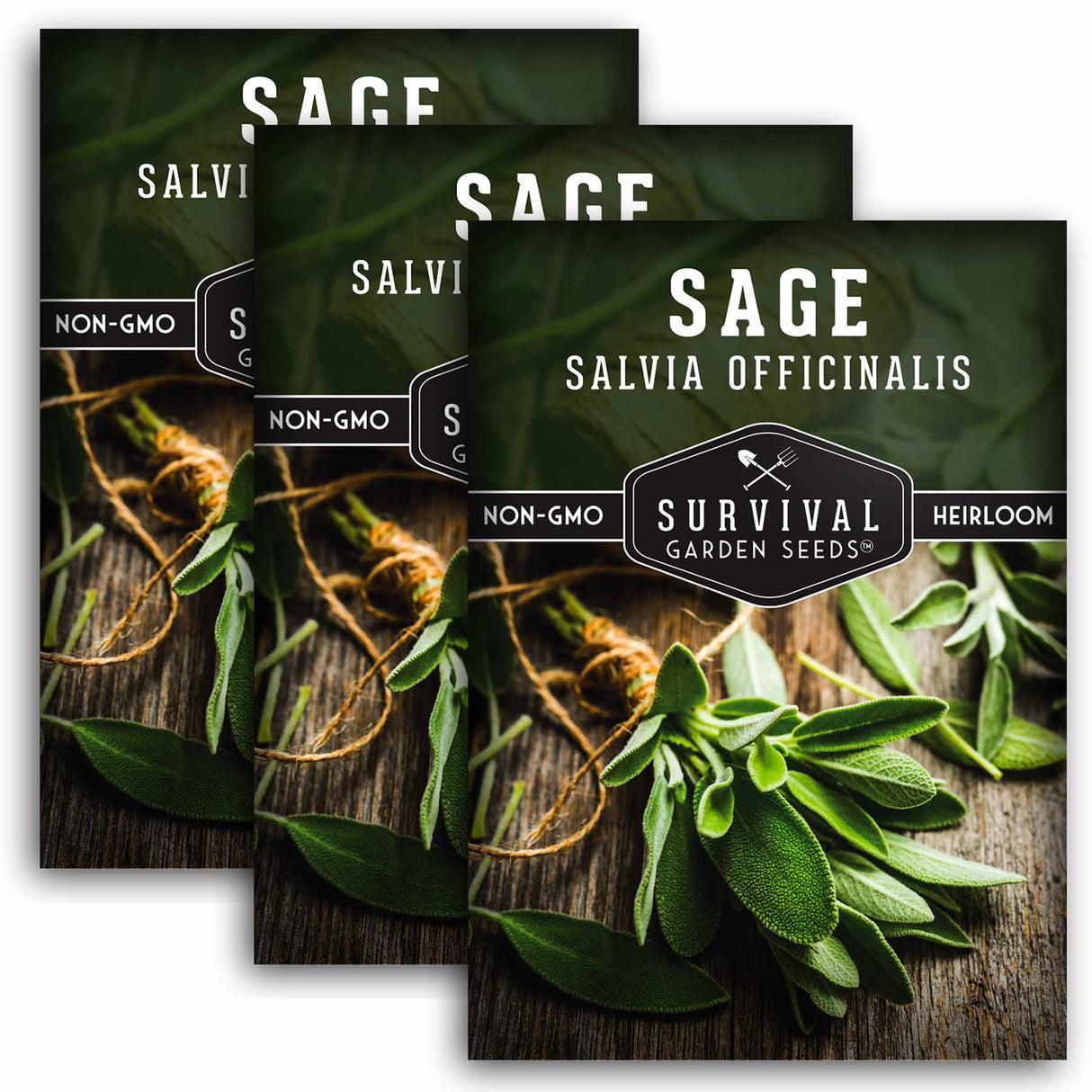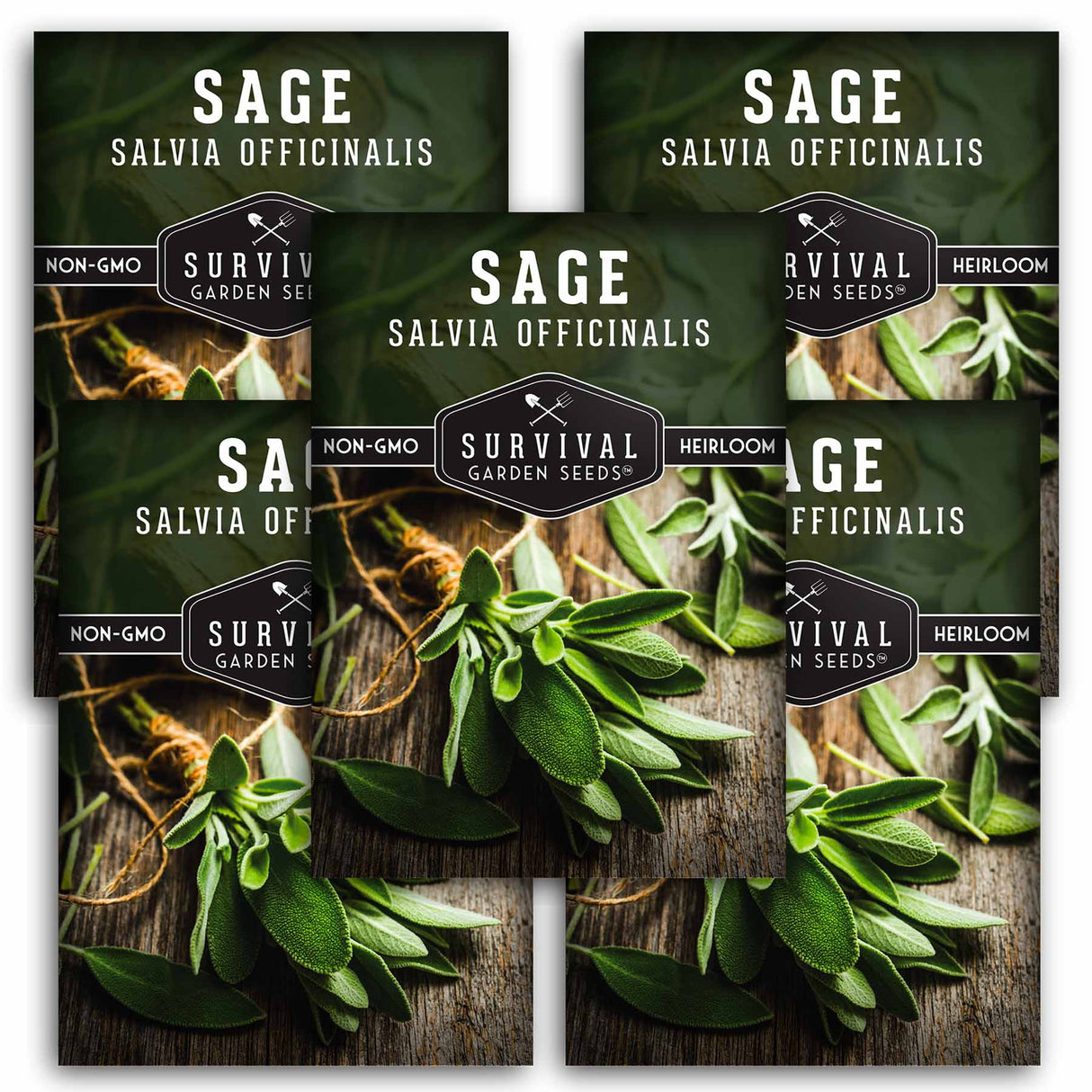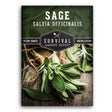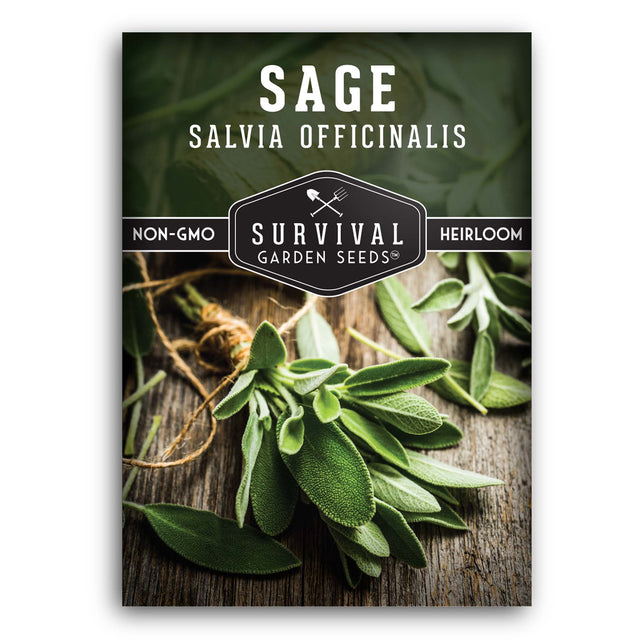Culinary Sage Seeds – Fragrant Perennial Herb for Cooking, Teas & Pollinator Gardens
Heirloom - Non-GMO - Reliable Germination
Culinary Sage Seeds – Fragrant Perennial Herb for Cooking, Teas & Pollinator Gardens - 1 Packet is backordered and will ship as soon as it is back in stock.
Couldn't load pickup availability
Grow fresh, aromatic culinary sage at home with Survival Garden Seeds. This classic herb is essential in any kitchen garden, valued for its dusty green leaves and distinctive savory flavor. Known for pairing beautifully with meats, vegetables, breads, and stuffing blends, sage offers a warm, earthy taste that becomes even more vibrant when harvested straight from the garden.
Culinary sage is a hardy perennial that produces pink, purple, or white flowers in early spring, adding soft color to garden beds while attracting bees, butterflies, and other pollinators. Its compact, drought-tolerant growth habit makes it a reliable choice for both container gardens and traditional herb beds.
Fragrant, Flavorful, and Easy to Grow:
- Fresh sage elevates poultry dishes, sausages, roasted vegetables, and baked goods
- Naturally aromatic foliage ideal for cooking, teas, and home seasoning blends
- Produces soft, dusty green leaves with classic savory flavor
- Hardy perennial with colorful spring blooms
- Attracts beneficial pollinators and supports a healthy garden ecosystem
Why Customers Love Culinary Sage:
- Essential herb for everyday and seasonal cooking
- Reliable perennial that thrives with minimal maintenance
- Strong fragrance and flavor when grown fresh at home
- Attractive addition to herb gardens, cottage gardens, and containers
How to Grow:
- Start seeds indoors 6–8 weeks before the last frost or sow directly outdoors after frost danger has passed
- Plant in full sun with well-drained soil
- Keep soil lightly moist during germination, then water sparingly once plants are established
- Allow plants adequate spacing for airflow and healthy growth
- Harvest leaves regularly by trimming stems, encouraging bushier growth throughout the season
Harvest & Use:
Pick fresh leaves as needed for cooking or dry them for long-term storage. Sage pairs beautifully with savory dishes, herbal teas, stuffing blends, and homemade seasoning mixes.
Learn more in our Survival Garden Training Blog
- 3 Types of Sage & Their Uses
Net Wt. 900MG
Heirloom Herb Seeds
All of our seeds are open-pollinated, non-GMO, heirloom varieties with tested germination rates
Specifications
Specifications
-
Botanical Name
-
Seasonality
-
Planting Zones
-
Light
-
Soil Temp for Germination
-
Germination Time
-
Planting Depth
-
Plant Size
-
Days to Bloom or Harvest
-
Growing Instructions
-
Seed Saving Instructions
-
Seed Count (approximate)
Payment & Security
Your payment information is processed securely. We do not store credit card details nor have access to your credit card information.
Why Choose Survival Garden Seeds
At Survival Garden Seeds, we believe in preparing today for tomorrow’s peace of mind. That’s why we offer only heirloom, non-GMO, and untreated seeds you can trust to nourish your family and support a sustainable lifestyle. As a family-owned American company, we’re committed to providing seeds that grow strong and true—helping you cultivate health, resilience, and beauty in your garden.
Frequently Asked Questions
Are your seeds heirloom and open-pollinated?
Are your seeds heirloom and open-pollinated?
Yes. All of our seeds are heirloom, open-pollinated varieties, which means they can produce seeds that grow true to type and are suitable for seed saving.
You can learn more about open-pollinated, heirloom, and non-GMO seeds in our Survival Garden Training blog.
Are your seeds non-GMO?
Are your seeds non-GMO?
Yes. All Survival Garden Seeds are 100% non-GMO. Our seeds are open-pollinated heirloom varieties and are never genetically modified.
Are your seeds treated with chemicals?
Are your seeds treated with chemicals?
No. Our seeds are completely untreated and free from chemical coatings, fungicides, or synthetic treatments.
How do I know my seeds are fresh?
How do I know my seeds are fresh?
Every seed packet includes a packed-for date, and we germination-test each seed lot before packaging to ensure high viability.
What is the shelf life of your seeds?
What is the shelf life of your seeds?
Most seeds remain viable for 3 to 5 years or longer when stored properly in a cool, dry place away from light and moisture.
In what USDA hardiness zones can I grow your seeds?
In what USDA hardiness zones can I grow your seeds?
Our varieties are selected to grow successfully across USDA Hardiness Zones 3 through 10. Each packet includes variety-specific planting guidance and germination tips.
